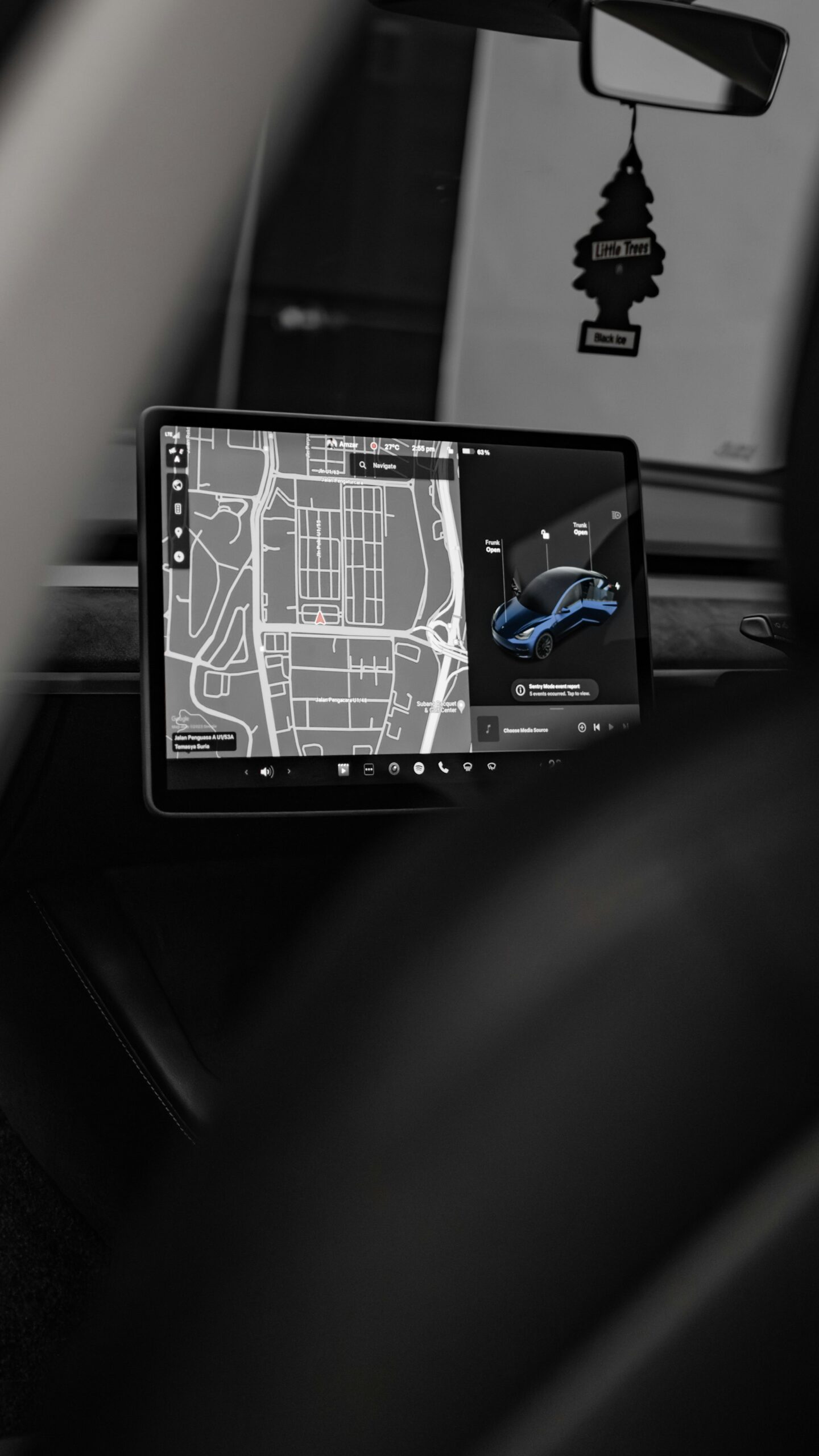Transforming Retail: How Augmented Reality Redefines Shopping Experiences

Photo by Ha Dong on Unsplash
Introduction: The New Age of Retail Experiences
Retail is undergoing a profound transformation as augmented reality (AR) bridges the gap between digital and physical shopping. AR overlays interactive digital elements onto the real world, enabling shoppers to engage with products in novel, informative, and exciting ways. This shift is not only enhancing customer engagement but also driving sales, reducing return rates, and helping brands stand out in a crowded marketplace [3] . In this article, you’ll discover actionable strategies, real-world examples, and step-by-step guidance for leveraging AR in retail to deliver superior business experiences.
Understanding Augmented Reality in the Retail Context
Unlike virtual reality, which immerses users in a fully digital environment, AR enhances the real world by overlaying digital information, graphics, or 3D models onto a live view from a smartphone, tablet, or smart glasses. Retailers are using AR to let customers visualize products in their homes, try on apparel virtually, and access detailed product information instantly [3] . This technology offers a more immersive, interactive, and informative shopping experience, making it easier for customers to make confident buying decisions.
Key Use Cases: Augmented Reality in Retail
AR in retail is no longer a futuristic concept. Here are the most impactful applications, each supported by real-world examples and actionable insights:
1. Virtual Try-Ons and Fitting Rooms
Virtual try-on technology enables customers to visualize clothing, accessories, or cosmetics directly on themselves using their mobile devices or in-store smart mirrors. This has revolutionized apparel and beauty retail by reducing uncertainty and minimizing physical contact. For instance, Tommy Hilfiger deployed AR mirrors in flagship stores, letting shoppers try on digital-only designs and instantly order different sizes or colors. This resulted in a 60% increase in try-ons and store foot traffic during pilot runs [4] .
Beauty retailers like Ulta and Sephora have introduced AR kiosks for customers to test makeup shades virtually, compare before-and-after looks, and discover new products in a fun, interactive way. This not only increases engagement but also boosts conversion rates and cross-sells [4] .
Implementation Guidance: To launch AR try-on features, brands should invest in quality 3D modeling and intuitive interface design. For web-based AR, platforms like Shopify provide tools for uploading 3D models and linking them to product catalogs [2] . For in-store solutions, partnering with AR technology vendors or developing custom smart mirror applications can deliver a seamless experience.
Challenges: Ensuring accurate fit, realistic rendering, and privacy protection are key. Incorporating artificial intelligence for advanced tracking and segmentation can enhance the realism and accuracy, especially for beauty and accessories [1] .

Photo by Harmeet Singh on Unsplash
2. Home Furnishing Visualization
AR apps allow shoppers to place virtual furniture or décor items in their living spaces, helping them gauge size, fit, and aesthetics. Oakywood, for example, used Shopify AR to let customers visualize custom furniture in their homes, resulting in a 250% sales boost for featured products [2] . This reduces the hesitation associated with high-ticket home purchases and minimizes costly returns.
How to Get Started: Retailers can use platforms supporting 3D model integration, or develop AR-enabled apps in partnership with experienced developers. Ensure models are true-to-scale and offer customization options for color, finish, or layout. Encourage users to share AR experiences on social media to drive word-of-mouth marketing.
3. In-Store Navigation and Smart Displays
Large department stores or malls use AR navigation to guide customers to specific products or promotions. By scanning QR codes or using dedicated apps, shoppers can see digital arrows, product highlights, or special offers overlaid on their path. AR-powered digital displays and windows are also used to create attention-grabbing, dynamic storefronts that can be updated in real-time and measured for effectiveness [2] .
Implementation Steps: Start by mapping your store layout and identifying key traffic zones. Use AR development platforms to create navigation overlays or interactive promotional content. Staff training may be necessary to assist customers in using these tools effectively.
Alternatives: For smaller stores, consider augmented signage or simple mobile AR experiences triggered by product packaging or shelf markers.
4. Personalized Recommendations and Product Information
AR can deliver tailored product information, reviews, or recommendations directly when a customer points their device at an item. This empowers shoppers with knowledge and builds trust. Some retailers enhance this by integrating loyalty programs or personalized offers into the AR experience [3] .
How to Deploy: Integrate AR product info overlays with your existing e-commerce platform or point-of-sale systems. Consider using QR codes or NFC tags for quick access to AR content.
Business Benefits of AR in Retail
1. Increased Engagement and Sales: Interactive AR elements captivate shoppers, encouraging longer visits and more product exploration. Retailers have reported up to 60% increases in engagement and significant boosts in sales for products featured in AR experiences [4] .
2. Reduced Returns: Virtual try-ons and product visualizations help shoppers make better decisions, leading to fewer post-purchase returns-a major cost-saving for retailers [3] .
3. Enhanced Brand Differentiation: Innovative AR experiences help brands stand out, attract new demographics (especially younger, tech-savvy shoppers), and build positive word-of-mouth.
4. Data-Driven Insights: AR platforms can capture real-time analytics on customer interactions, empowering retailers to optimize displays, product assortments, and marketing strategies [2] .
Step-by-Step Guidance to Access and Implement AR in Retail
If you’re considering adopting AR in your retail business, follow these steps for a successful rollout:
- Assess Your Needs: Identify which AR applications align best with your products and customer base. Are you looking to reduce returns, differentiate your brand, or drive in-store engagement?
- Research Technology Partners: Look for established AR platforms, e-commerce providers with AR integration (like Shopify), or specialized development agencies with retail experience. Always verify their track record and request case studies where possible.
- Develop and Test: Start with a pilot in a single category or store. Gather feedback, measure engagement and conversion rates, and iterate on the experience.
- Train Staff and Educate Customers: Ensure employees understand how to assist shoppers with AR features. Provide clear in-store signage and online guidance to encourage adoption.
- Promote Your New Capabilities: Use social media, email marketing, and in-store events to highlight your AR experiences. Consider influencer partnerships or local media outreach to generate buzz.
- Monitor and Optimize: Use analytics to track usage patterns, sales impact, and customer satisfaction. Adjust your AR offerings based on data-driven insights for ongoing improvement.
Alternative Approaches: If building a custom AR solution is not feasible, start with ready-made AR features from e-commerce platforms, or partner with technology vendors offering white-label solutions. Many AR providers offer free demos or consultation sessions-search for “augmented reality retail solution providers” to explore options.
Potential Challenges and Solutions
Technical Complexity: Developing high-quality, realistic AR can require significant investment in 3D modeling and software development. To address this, start with limited pilots and leverage existing AR tools wherever possible.
User Adoption: Some customers may be unfamiliar with AR. Provide clear instructions, intuitive interfaces, and in-store support. Demonstrations can help break down barriers and showcase value.
Privacy Concerns: Virtual try-ons and data collection must be handled transparently. Inform customers about what data is collected and how it will be used.
Conclusion: Getting Started with AR in Retail
Augmented reality offers retailers powerful tools to engage customers, enhance the shopping journey, and drive measurable business results. Whether you are a small boutique or a national chain, there are scalable, actionable pathways to implement AR in your retail experience. Begin by assessing your unique needs, researching technology partners, and launching a focused pilot.
For additional support, you can consult official e-commerce platforms or industry associations for guidance on AR best practices. Many leading AR technology providers offer consultations and demo programs-search for “retail augmented reality solution providers” or connect with your e-commerce platform’s support team for platform-specific resources.
References
- MobiDev (2025). Augmented Reality in Retail: Use Cases, Challenges, Best Practices.
- Shopify (2025). AR Technology in Retail: Use Cases and Benefits.
- Amazon Seller Blog (2025). Augmented reality retail: How AR is transforming the shopping experience.
- BrandXR (2025). 2025 Augmented Reality in Retail & E-Commerce Research Report.
MORE FROM smartsavingsfinder.com













